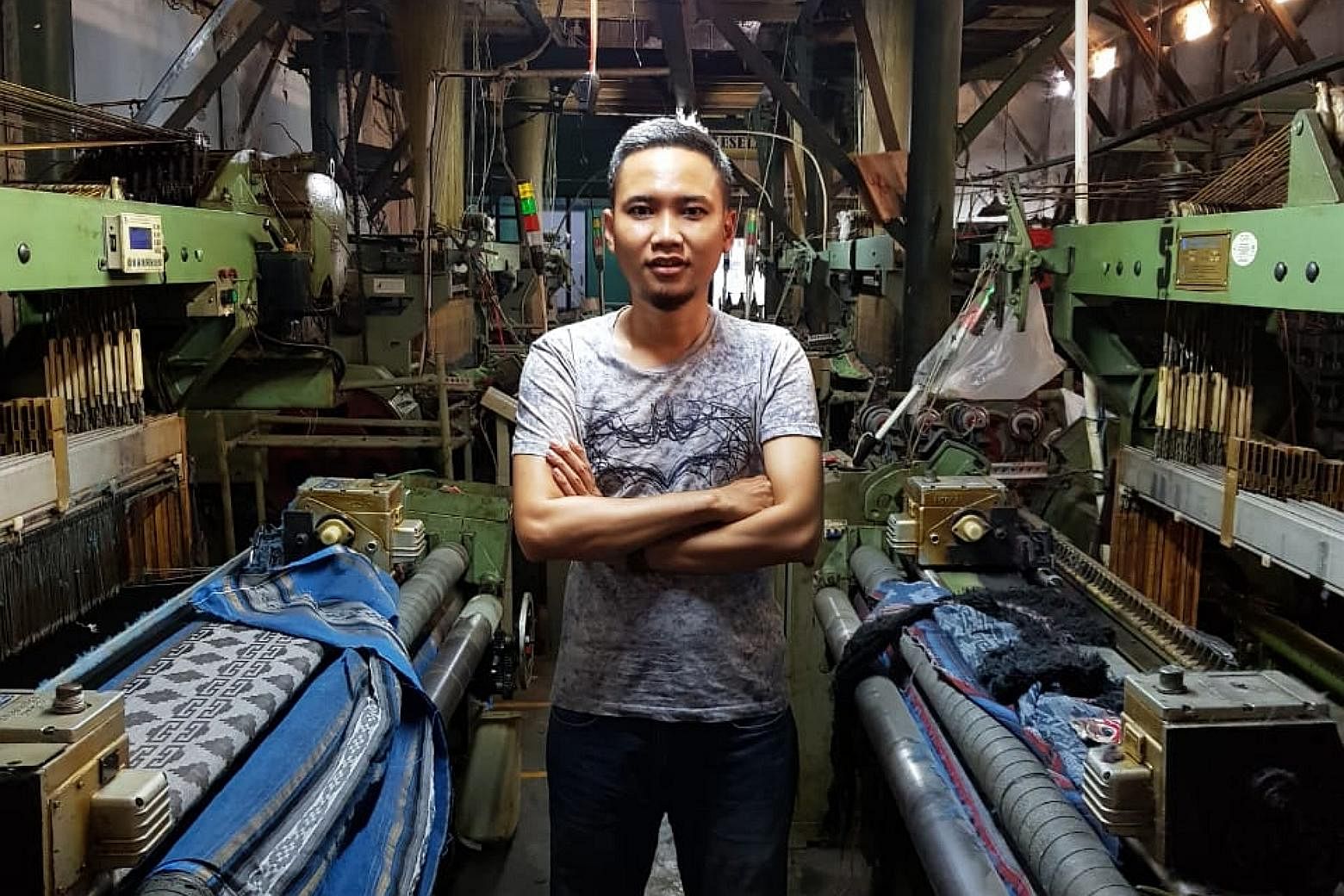Millions of Indonesia's micro, small and medium-sized enterprises (MSMEs) are struggling to survive amid the Covid-19 outbreak, which has seen 119,000 infections and 5,500 deaths in the country.
While many of the businesses are turning to creative ways to keep afloat, such as going online, others are jumping into new ventures as they wait for the situation to improve.
Mr Deni Gaos, a shoemaker in Bandung, West Java, saw his sales drop by around 80 per cent after a major client - a prominent local shoe brand - stopped buying in early April.
As his revenue plunged, he laid off his five employees.
The 43-year-old father of two switched to selling shoes online, but sales have barely reached half of pre-pandemic levels.
"I really hope the situation will soon improve and the economy can recover so that my orders can return," Mr Deni, who began his business in 2011, told The Straits Times over the phone.
While he has managed to soldier on, many others have not been able to do so.
Around 70 per cent of Indonesian MSMEs have stopped operations, either temporarily or permanently, according to a survey on 571 SMEs by the International Labour Organisation in April.
There are about 64 million MSMEs in Indonesia that employ 116.9 million people, or 97 per cent of the labour force. These companies contribute almost 61 per cent to Indonesia's gross domestic product, according to data from Bank Rakyat Indonesia, the country's largest lender by assets.
During the 1997-1998 financial crisis, many MSMEs proved resilient. But now they have been hit hard by the outbreak because the country's partial lockdowns have hindered consumption.
Bandung-based sarong producer Rendi Akbar Siddiq is among those shifting to other types of businesses to make ends meet, while hoping for a quick economic rebound.
He lost his income in March as demand from his traders in South-east Asia's largest textile market in Tanah Abang in Jakarta weakened. He used to sell around 6,000 sarongs each month, earning 100 million rupiah (S$9,400).

With thousands of sarongs piled up in his warehouse, the 28-year-old halted operations and fired his five employees in March.
Mr Rendi, who began his business in 2017, has had his loans at two banks restructured, with only one of the banks still requiring him to pay a small monthly instalment.
To earn some money, he started selling rice in late June.
"I think it will take more than six months for the textile industry to recover," Mr Rendi said.
-
70%
-
Approximate proportion of Indonesian micro, small and medium-sized enterprises that have stopped operations, either temporarily or permanently, according to a survey in April.
The government has rolled out a number of incentives for MSMEs totalling 123.46 trillion rupiah, including interest subsidies and tax incentives, to tide them over the hard times.
Late last month, the government vowed to channel working capital to 12 million MSMEs, with each set to get 2.4 million rupiah.
But Dr Enny Sri Hartati, an economist at the Institute for Development of Economics and Finance , said some of the incentives are not well targeted.
Citing tax incentives as an example, she said that around 98 per cent of local MSMEs do not pay taxes because of the small scale of their businesses and tiny revenues.
"Most assistance offered by the government concerns financing, while the problem is not the liquidity," she said, adding that the government now needs to speed up the disbursement of funds allocated for programmes aimed at increasing people's purchasing power, which can help push up demand.
